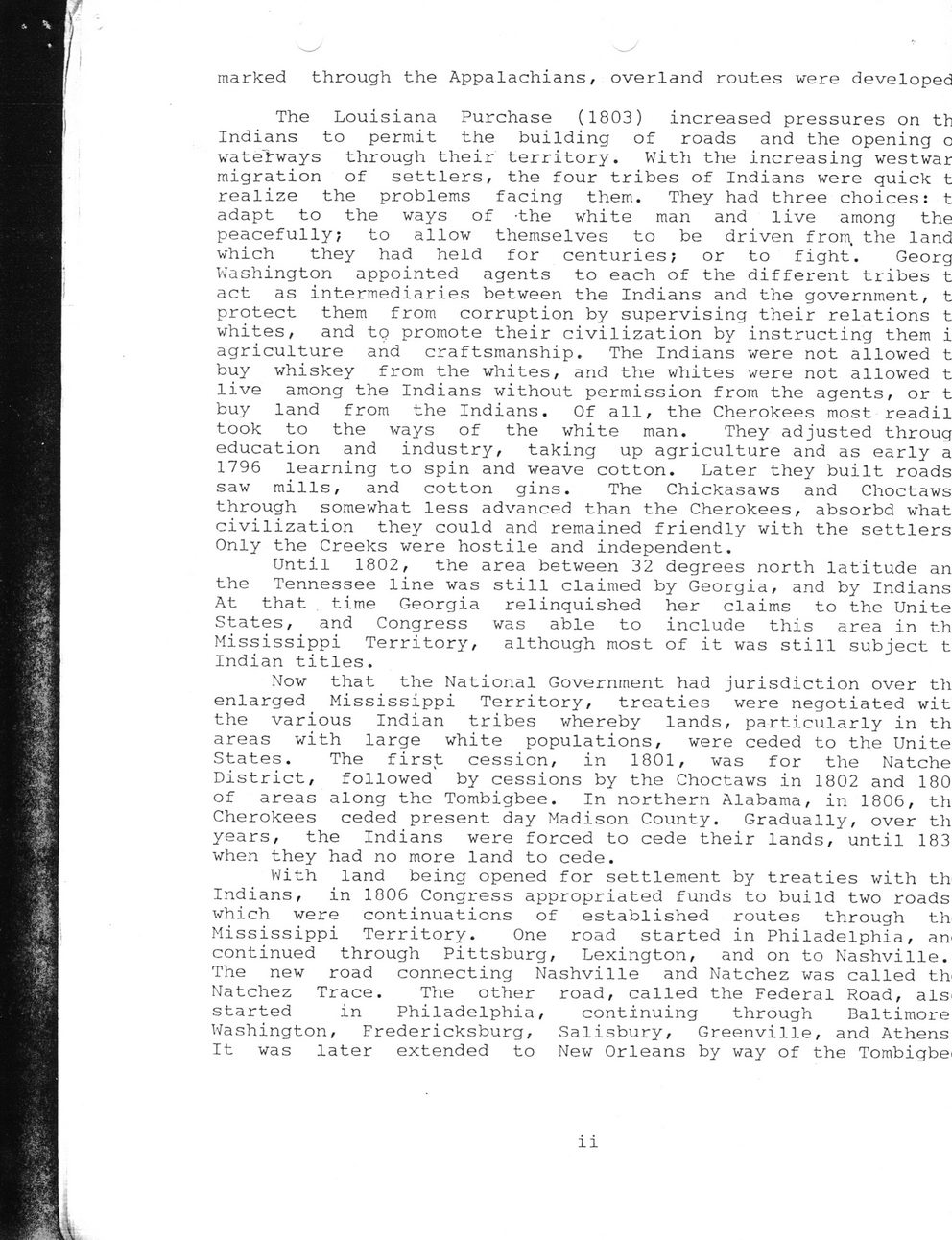This text was obtained via automated optical character recognition.
It has not been edited and may therefore contain several errors.
marked through the Appalachians, overland routes were developed The Louisiana Purchase (1803) increased pressures on th Indians to permit the building of roads and the opening o waterways through their territory. With the increasing westwar migration of settlers, the four tribes of Indians were quick t realize the problems facing them. They had three choices: t adapt to the ways of -the white man and live among the peacefully; to allow themselves to be driven from, the land which they had held for centuries; or to fight. Georg Washington appointed agents to each of the different tribes t act as intermediaries between the Indians and the government, t protect them from corruption by supervising their relations t whites, and tq> promote their civilization by instructing them i agriculture and craftsmanship. The Indians were not allowed t buy whiskey from the whites, and the whites were not allowed t live among the Indians without permission from the agents, or t buy land from the Indians. Of all, the Cherokees most readil took to the ways of the white man. They adjusted throug education and industry, taking up agriculture and as early a 1796 learning to spin and weave cotton. Later they built roads saw mills, and cotton gins. The Chickasaws and Choctaws through somewhat less advanced than the Cherokees, absorbd what civilization they could and remained friendly with the settlers Only the Creeks were hostile and independent. Until 1802, the area between 32 degrees north latitude an the Tennessee line was still claimed by Georgia, and by Indians At that time Georgia relinquished her claims to the Unite States, and Congress was able to include this area in th Mississippi Territory, although most of it was still subject t Indian titles. Now that the National Government had jurisdiction over th enlarged Mississippi Territory, treaties were negotiated wit the various Indian tribes whereby lands, particularly in th areas with large white populations, were ceded to the Unite States. The first cession, in 1801, was for the Natche District, followed by cessions by the Choctaws in 1802 and 180 of areas along the Tombigbee. In northern Alabama, in 1806, th Cherokees ceded present day Madison County. Gradually, over th years, the Indians were forced to cede their lands, until 183 when they had no more land to cede. With land being opened for settlement by treaties with th Indians, in 1806 Congress appropriated funds to build two roads which were continuations of established routes through th Mississippi Territory. One road started in Philadelphia, an continued through Pittsburg, Lexington, and on to Nashville. The new road connecting Nashville and Natchez was called th Natchez Trace. The other road, called the Federal Road, alS' started in Philadelphia, continuing through Baltimore Washington, Fredericksburg, Salisbury, Greenville, and Athens It was later extended to New Orleans by way of the Tombigbe<

Hancock County 1 Burr-Betty-Fagan-Mississippi-Territory-(077)